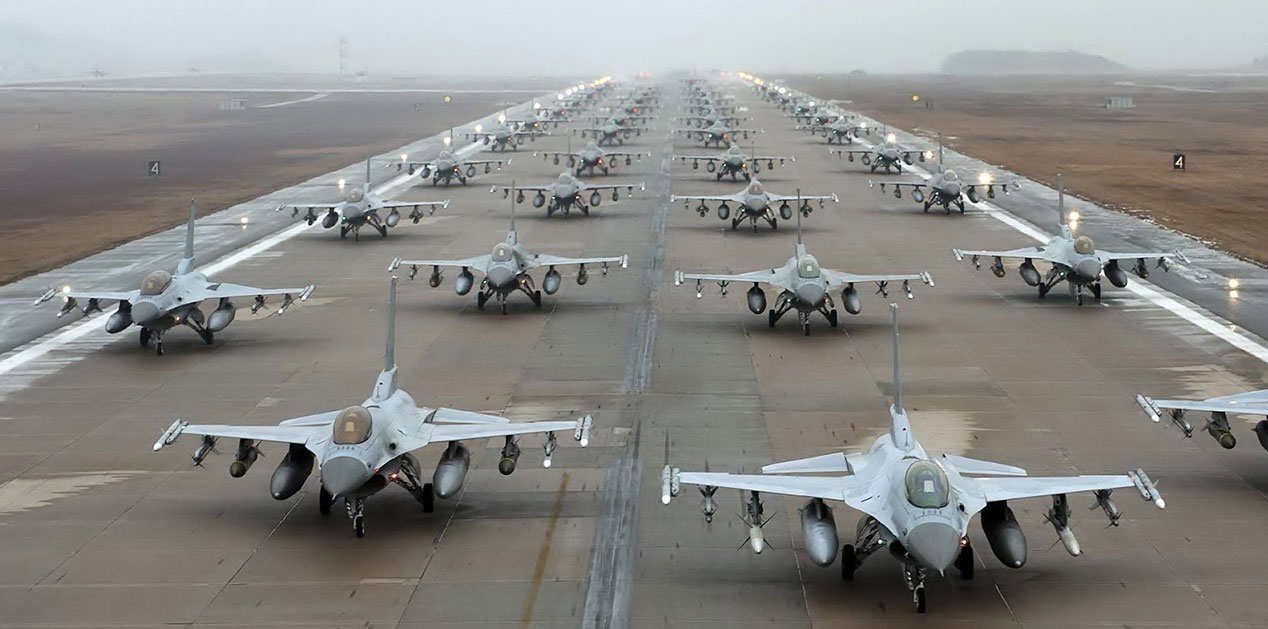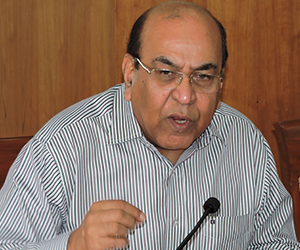The US Congress about turn on the supply of F-16 advanced fighter aircraft for Pakistan appears less to do with policy and more an action borne out of frustration; a temporary inconvenience for Pakistan. According to the deal, Pakistan would have paid $270 million and the remaining $ 430 million was to come from the US; the Congress has refused the US liability which could force Pakistan to pay the entire $700 million. Technically the aircraft sale hasn’t been blocked; it’s the free lunch’s that has gone, at least so far.
The US-Pakistan relationship is an old, long-standing one and Pakistan has at most times in this history occupied the position of a US frontline state. However, ever since it’s involvement in the US tangle in Afghanistan in late 2001 it has been treated as a strategic ally with arms and humanitarian aid. Estimates put the total bill at $35 billion so far. Given the inability of the International Security Assistance Force (ISAF) to secure a military victory against the Taliban and the decision to progressively draw down and eventually withdraw, the US has been largely dependent on Pakistan to ensure the stabilization of Afghanistan and its West backed government in Kabul. However, Pakistan has its own security concerns with a raging insurgency/terror campaign in the restive NWFP and other border areas with Afghanistan. It also perceives that this terror campaign is supported by India and Afghanistan due to which it needs its own strategic space inside Afghanistan to push out India’s hold. The third of its security concerns is the border with India especially in J&K.
Munir Akram, former Pakistan Permanent Representative at the UN, in a commentary in the Dawn ascribes three reasons for the US Congress decision. These are firstly, to put pressure for the release of Dr Shakil Afridi, the Pakistani doctor who allegedly took the DNA samples from Bin Laden’s hideout under the garb of an inoculation program. Secondly, to force Pakistan to take military action against the Haqqani Group. And, lastly to prevent deployment of theatre nuclear weapons against India on Pakistan’s eastern front. Akram strongly justifies Pakistan’s apparent decision to refuse acquiescence on any of the demands, which actually are assumptions and nothing more. The Pakistani attitude actually stems from an incremental confidence in its handling of foreign affairs over the last two years; much of it comes from the backing it receives from China.
The Obama Administration clearly needs Pakistan for the final US withdrawal from Afghanistan. But Pakistan continues to believe that it is the victim of conspiracies and the space in Afghanistan is being used to marginalize it. Hence its intent is to keep intact those networks which will aid it in the control over Afghan space and denial of the same to India. That is the crux of its differences with the US which it feels is now veering towards India as a big strategic partner.
There are compulsions which force the US Administration to have perceptions about keeping Pakistan stable and having its stakes firmly grounded there. Not the least of these is the geo strategic location that Pakistan commands. Hardly is it realized that Pakistan sits on real estate which is the virtual meeting ground of four civilizations. The Persian, Central Asia, Indian and Chinese civilizations have their shades of influence and bring their own dynamics to the meeting ground. So close to the Middle East, connected to China by what will become a major link artery of the world the China Pakistan Economic Corridor, occupying a very important segment of the coastline of the Indian Ocean and possessing inland routes from the Indian Ocean to Central Asia; this is what makes Pakistan such an important nation, bestowed the favors of geography.
Pakistan seldom realizes that India’s agenda remains focused on emerging as a strong economic power, be a workhorse of economic progress and deliver to its people a high quality of life. Pakistan’s Army which rules the roost as far as foreign and security policies of Pakistan are concerned, is driven by desire to wreak revenge for its defeat of 1971 and restrain India from achieving its goals. It is a self-defeating ideology and the US has helped fuel it by regularly providing humanitarian (understandable) and military assistance (something it could have used as a leverage to control strategic behavior). The US fails to recognize the limitations of its influence, chooses to ignore Pakistan’s shenanigans and continues the policy of weapon supply by certification or otherwise by the Chief Executive. What it also fails to appreciate is the cumulative effect this has on Pakistan’s confidence and its ability to continue its policy of proxy war against India ignoring the world at large. The idea of dual usage of this military hardware, which is supposed to enhance Pakistan’s internal security, is well known to the US but it fails to factor this in for all the reasons explained. As the core center of Islamic radicalism the failure of the US to place strong curbs on Pakistan helps the latter’s military to play the cards at will.
The US and others also fail to perceive the true picture of the mild response from India to provocation. It is India’s continued commitment to its people that it has not been provoked to adopt a military response because its focus remains on its own comprehensive growth. However, increasing Pakistani confidence in the light of its strong relationship with China, military support from the US and broad understanding that Pakistan bears the key to finding peace and stability in Afghanistan, is likely to lead to an unrealized crossing of the threshold of India’s tolerance. Theatre nuclear weapons cannot be deterrence once India has clearly decided to use a military option. It has the strength of its own nuclear arsenal and doctrine which unambiguously recognizes that second use is not contingent on the size or type of nuclear weapon launched against its territory or military forces as the nuclear trigger.
Is the current action by the US Congress a result of India’s lobbying? This is what Pakistan is making it out to be. If at all, this lobbying has clearly not achieved anything strategic because the US system has enough loopholes to maneuver a decision in favor of Pakistan; the F-16s will be delivered to it by hook or by crook. Clearly, India’s emerging strategic relationship with the US is not yet sufficiently robust to offset Pakistan’s importance as a US ally and partner. The Rebalancing or Pivot to Asia appears to be factoring in the role of Pakistan in stabilizing Afghanistan far more than India’s role in the Indo Pacific. This is unlikely to change and India needs to cater for that with its own policy of enhancing its combat ratios with Pakistan.
The recent killing of Mulla Mansoor by an American drone, in Baluchistan near the Iranian border is leading to speculation that it was done on the basis of information provided by Pakistan itself. If true it was obviously an attempt to make up to the Americans, send positive signals to the US Congress and remove a dangerous obstacle from the way; Mansoor was known to be less than cooperative with Pakistan’s ISI and had been instrumental in calling off the peace process in Aug 2015. If indeed Mulla Mansoor’s death is linked to the Pakistanis it would prove how fickle are partnerships in the game of international subterfuge and posturing.
If nothing else, the temporary halt of the sale/supply of F 16 aircraft to Pakistan, would have achieved one major change in US policy in Af-Pak; the now acknowledged US extension of the drone attacks to Baluchistan from the NWFP and FATA border region. The F-16s will still find their way to Pakistan's arsenal but would have succeeded in changing much of the strategic landscape of the environment which they hope to secure.
Published Date: 29th May 2016, Image Source: http://www.rediff.com
(Disclaimer: The views and opinions expressed in this article are those of the author and do not necessarily reflect the official policy or position of the Vivekananda International Foundation)










Post new comment